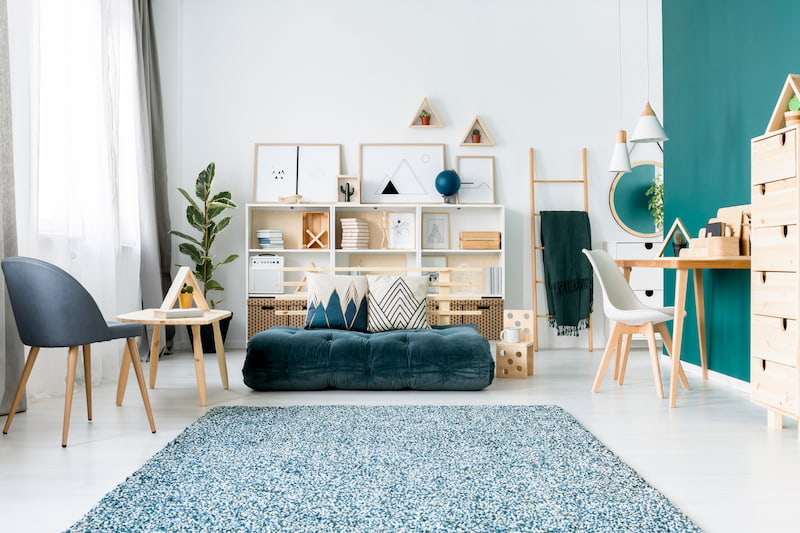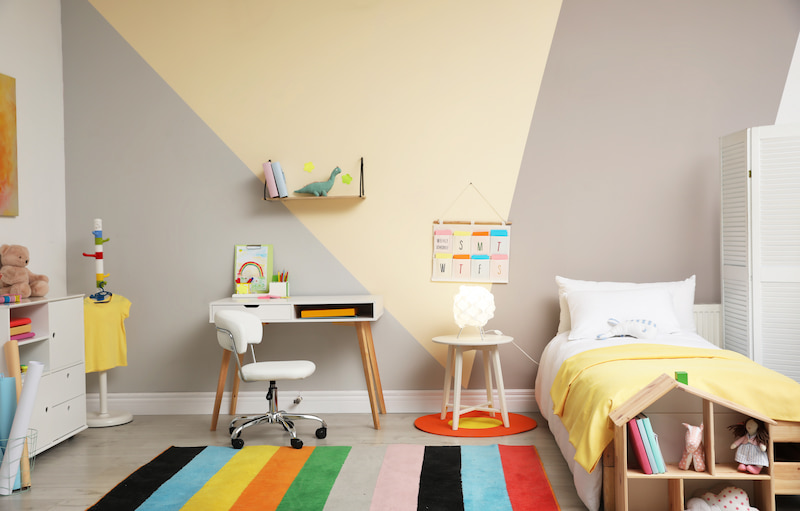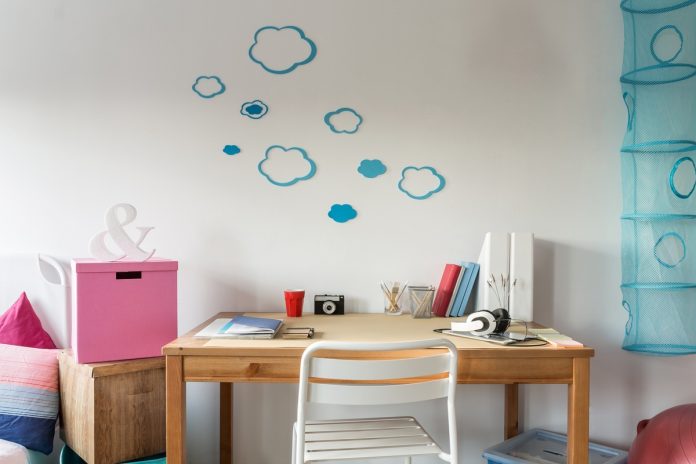One of the most important spaces at home for children is the study room. Because the work of the little ones continues after school hours and every child must have their own place to be able to do their homework and study comfortably and with total concentration. So we want to talk to you about the essential elements for a children’s study room .
Back to school means new routines and lots of homework. Creating an organized study space free of distractions is one of the keys to a successful school year, and to maintaining your sanity.
To help your kids be productive, we’ve compiled 10 simple and creative study room ideas that you can use at home. Our Gilmar Decoration team tells us what are the essentials that we must always include in this space, so that the little ones have everything they need to study at home and learn from their earliest years to be responsible with their school obligations.
1. Kids study room furniture
The most important aspect of creating a study area for children is choosing the most suitable furniture for them. It is enough for children to have a table and a chair to be able to do their homework and prepare for lessons at home, but this furniture has to be suitable for them.
To begin with, the table and chair must be adapted to the child’s age, having enough space to do the activities of each child and that they are comfortable for him. While for a small child it will be enough to have a wide low table and a chair in which he can sit with his feet on the floor, as children grow they will need a study table and a good ergonomic chair.
Keep in mind that children will spend many hours sitting in their study room and at this stage in which they are in full growth, comfort is a priority so as not to negatively interfere with their development.
2. Lighting
In the same way that it is important to invest in a good chair that adapts to the shape of the child’s back, lighting is essential so that children do not suffer damage to their eyes while doing their homework.
It is best to have natural lighting, but if there is no light in the children’s study room all day, we can always use an articulated lamp. In this case, it is preferable to use cold light, since it is more similar to natural light and is much less damaging to the eyes.
3. Have everything at hand
A messy study space does not inspire creativity. To prevent the child from wasting time while he does her homework and studies at home, your children’s study room must have everything you need. A place for everything and everything in its place. Children must learn to keep their space in order, but for this they need to have the tools to help them organize everything. And so you will have one less worry to keep the house tidy.
Pens, filing cabinets, drawers for everything and that they all have it at hand in the same place so that they do not have to be constantly getting up and wasting time. Only in this way, the study hours will be more effective for the children and thus they will have more free time to enjoy after their favorite activities.
Think about the advantage of having everything at hand, for example, when talking about decoration for shared children’s rooms if you have more than one child.
4. No distractions
Experts recommend that a child’s study space be outside their bedroom and as far away from their toys and other distractions as possible. In many homes it is not possible to have an exclusive room to use as a child’s study room, but you can always get a space for study in the same child’s bedroom.
The key is to keep away any distractions that could dissipate the child’s concentration while doing their homework. To do this, choose the quietest corner of the room and enable it so that all the toys are as far away from the child as possible.
The most appropriate thing is that the toys and any dissuasive element are collected in the room, without being visible so that the child is not distracted during his study hours.
As you can see, getting a more comfortable study room for children is not very complicated, and you do not need to spend too much time or money to get it.

5. Think about creating a family collaboration space
If you or your partner are working from home due to the effects of the pandemic, chances are you’ve already set up a home office or living room workspace. And why not create an extra room for it? Your child may even find that having an adult homework buddy helps keep him motivated with his work.
If you have more than one child, make sure each one has enough space to work comfortably. Some children work better in a group, while others are too tempted to chat. It all depends on your child and what works best for him, and for you.
6. Create a portable homework space
Are you running out of space in your house? No problem. The kitchen table is the perfect place to do homework. To maintain order in this versatile space, store school supplies in a drawer that can be placed in the pantry or in a nearby closet. At mealtime, just put them away.
And, in addition, you can watch the children while you prepare dinner.
7. Yellow color to improve attention and concentration
Accent with yellow to improve attention and concentration. We already referred to it when talking about the importance of the influence of decoration on the development of children’s emotions. Now we suggest you put it into practice in the matter of using a color to favor attention and concentration.
Color theory – or color psychology – is the science that studies how colors and color combinations influence mood and behavior , stimulate the brain and body, and also affect health. According to color guidelines, sunshine yellow is the optimal color for a study room because of its stimulating effect on the brain. The soft and subtle shades of this color promote concentration, while bright yellow can stimulate memory.
As much as possible, avoid the color red when creating a workspace. According to a study published in the Journal of Experimental Psychology , the fact that a child sees the color red before an important test could have a negative effect on her grade.

8. Art shows and school projects
Celebrate your child’s achievements by displaying their homework and creations in their workspace. There are many quick and creative ways to do it. For example, you can hang objects on a clothesline, pin papers to a cork board, or frame special objects that make your child proud.
9. Turn a closet into a study room
A closet is the perfect place for the child to work. To do this correctly, keep at least one shelf in the closet at desk height and eliminate any that are directly above or below the child. Add a desk lamp for better lighting and you’re done! This study space is also an easy way to create a separation between the child’s homework and her bedroom or play area . When the child has finished his work, simply close the cabinet door.
10. Let your child choose the decoration
As cute as these study room ideas are, their goal should be to encourage schoolwork. And let’s face it: homework is usually not fun. Why not involve your son in the design of his study space ? Let the kids choose the decorations or surprise them with some cool school supplies. You can also personalize the space by putting the names or initials of the children. After all, they are more likely to use the space (even to solve difficult mathematical equations) and will want to keep it clean if they helped create it.
Follow these tips from the Gilmar Reforms and Interior Design team and your little ones will be able to start the new school year on the right foot, having everything they need from the beginning to achieve the maximum performance of their effort with a good study room.






